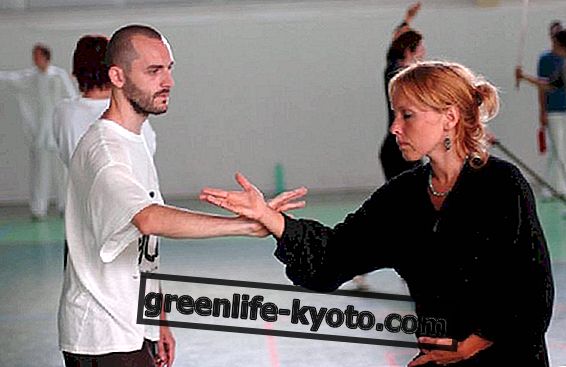
Acupuncture points
The Chinese acupuncture philosophy explains how the human body is dotted with points. These areas are like switches, energy nodes with the function of managing the potential of the entire organism. By intervening on them using appropriate appropriate tools and the correct knowledge, the acupuncturist is able to modify the balance of the body and treat different disorders.
Many of you will have seen, at least once, the acupuncture points represented on a sort of graph of the human body, perhaps on a book or on the wall of your (holistic) doctor's office. Well, that's a map . It represents numerous points of the body where energy is often accumulated, also known as qi . Said in Chinese Xuè (pronounced 'sciuè') and Tsubo in Japanese, the original meaning of the name is attributed to the concept of ' cave ' or ' crack '.
Most of the acupuncture points are located at the bottom of small depressions that have, to the touch, a particular sensation, according to some almost velvety. These are subjective perceptions linked to the sensitivity and experience of the operator: skin and subcutaneous tissue, in fact, change in consistency with respect to the other points of the body. Physiologically speaking, the acupuncture points correspond to areas with lower electrical conductivity values, sprayed with a large number of nerve receptors. As for the patient, it can be said that, often or almost always, acupuncture points are painful or, at least, sensitive to pressure. Generally, in fact, they immediately recognize themselves.
Map and itinerary
There are twelve main channels, called meridians, which extend vertically, bilaterally and symmetrically; each channel corresponds and connects internally to each of the twelve organs, called zang fu . This means that there are six yin and six yang channels; there are three yin and three yang channels running on each arm, three yin and three yang on each leg. The three yin channels of the chest (lung, pericardium and heart), begin from the chest and travel along the inner face (mainly the anterior portion) of the arm, towards the hand. The three yang channels of the hand (large intestine, san jiao and small intestine) start from the hand and travel along the outer face (mainly the posterior portion) of the arm, towards the head. The three yang channels of the foot (stomach, gall bladder and bladder) start from the face, in the region of the eye and descend along the body along the outer face (mainly the anterior and lateral portion) of the leg, towards the foot. The three yin channels of the foot (spleen, liver and kidneys) start from the foot and travel along the inner face (mainly the posterior and medial portion) of the leg, towards the chest or the hip.
The flow of qi through each of the twelve channels includes an internal and an external pathway.
The external route is the one normally shown on the acupuncture map and is relatively superficial. All the acupuncture points of a channel reside in its external pathway.
The superficial paths of the twelve channels describe three complete body circuits . The energy flow through the meridians is as follows: from the "lung" channel of the hand ( taiyin ) to the "large intestine" channel of the hand ( yangming ), passing through the "stomach" channel of the foot ( yangming ), the spleen "canal" "of the foot ( taiyin ), the channel" heart "of the hand ( shaoyin ), the channel" small intestine "of the hand ( taiyang ), the channel" bladder "of the foot ( taiyang ), the channel" kidney "of the foot ( shaoyin ), the "pericardium" channel of the hand ( jueyin ), the san jiao channel of the hand ( shaoyang ), the "gallbladder" channel of the foot ( shaoyang ), the "liver" channel of the foot ( jueyin ), and then again for the "lung" channel of the hand ( taiyin ).
See the acupuncture points
For some time, the scientific community has shown itself to be divided, both on the effectiveness of these pressure points and on their existence . In the 1970s, numerous infrared, impedance and scintigraphy studies led to contradictory results. In fact, the acupuncture points are electrically demonstrable, as the electrical resistance of the epidermis is clearly lower at the acupuncture points than the surrounding one. This difference persists also in corpses and in the sectioned limbs. These points undoubtedly have a lower electrical resistance, but have a higher electrical conductivity.
A team of Chinese scientists seems to have solved the mystery, having found visual evidence of the existence of these points. Researchers at Fudan University used a futuristic machine called Shanghai Synchrotron Radiation Facility. The presence of acupuncture points emerged as an independent formation. In particular, the scientists focused on 4 of them: Sanyinjiao, Neiguan, Zusanli and Tianshu . The X-ray rays emitted by the Shanghai Synchrotron Radiation Facility are 100 million times brighter and 10, 000 times more intense than those of the beam produced by a standard X-ray machine. During the nine-month test phase of the machine, the researchers then discovered that by means of this the cancer cells could be detected in the initial phase.













